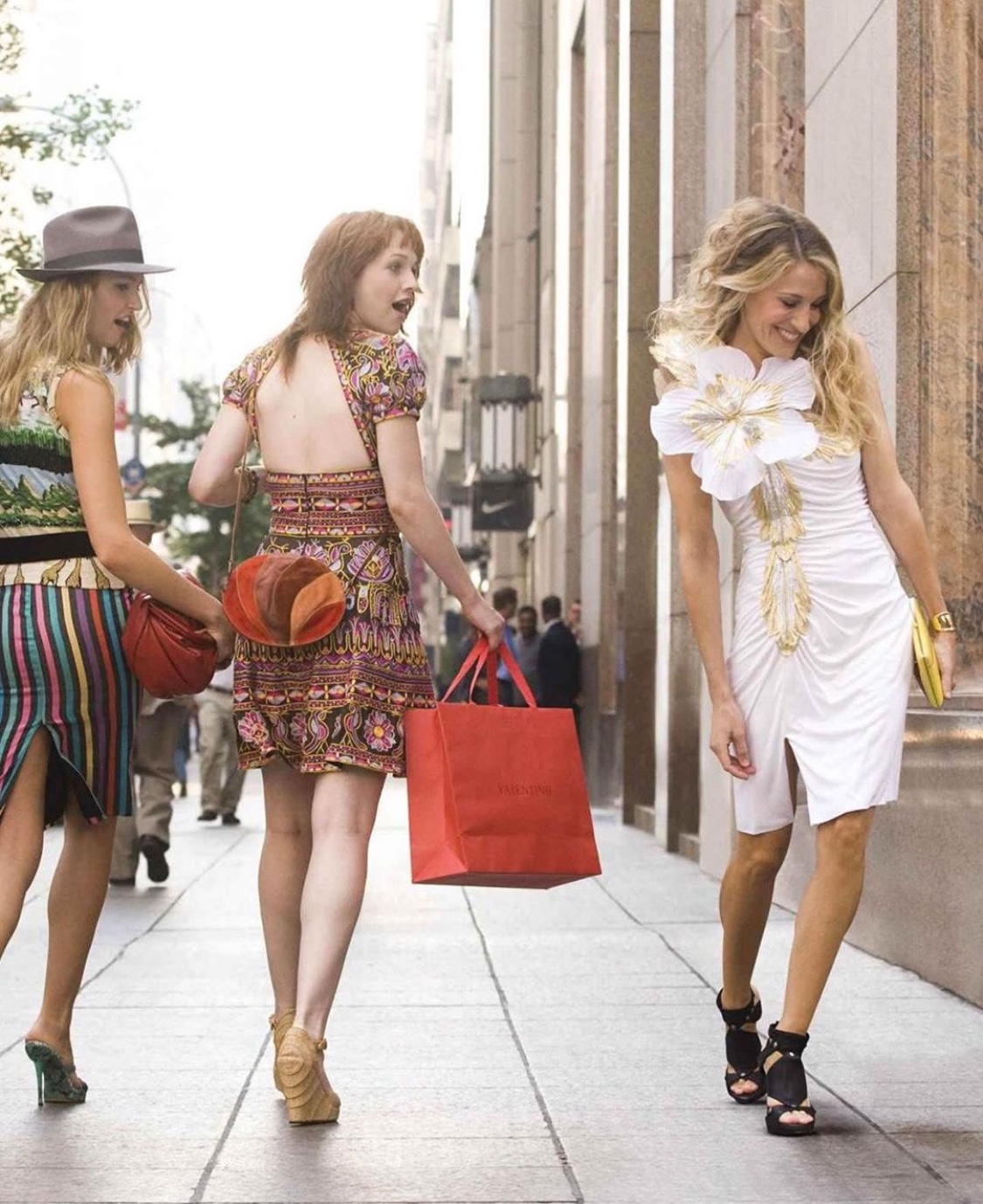Here’s Dr. Hindie Klein’s take on it.
The Mind of a Shopaholic:
Some people shop themselves into an addiction. An alcoholic can give up booze, a gambler can give up on Las Vegas, but you have to shop. This is what makes Oniomania such a pernicious disorder. One day you look at your closet, and it’s filled with endless stuff, or you’re in debt, or you’ve stolen money to satisfy your habit.
• Do you buy things you want, whether or not you can afford them?
• Do you buy things to cheer yourself up or to reward yourself?
• When you put off buying something you really want, do you feel deprived, angry or upset?
These are some of the questions asked by Olivia Mellan and Sherry Christie, recovering shopaholics and the authors of Overcoming Overspending: A Winning Plan for Spenders and their Partners (Walker and Company, 2008). They discuss the etiology of overspending, also known as compulsive shopping or “Oniomania.” And, explain how, with the help of their partners, a shopaholic can overcome this addiction.
That’s right, addiction. Oniomania may be considered an aspect of an impulse control disorder, or an obsessive-compulsive disorder. Also referred to as compulsive shopping, shopping addiction, shopaholism or compulsive buying (CB), recent research has indicated that Oniomania has become a significant concern in our society, right up there with addictions such as alcoholism, eating disorders or substance abuse.
Consider the case of Kate. Kate is a 22 year old young woman who lives at home with her parents and is in a difficult and highly competitive graduate program. She has a new boyfriend who may be a “keeper” and she works part-time as sales person in a dress shop.
Kate tends to get anxious easily. She tries to juggle all her responsibilities and commitments, but at times it gets a bit overwhelming, despite the fact that things are going relatively well. Often, when Kate needs to unwind and let off steam, she turns to an activity that she finds fun, and exciting and rewarding; she shops. In stores, online, anywhere she can. Kate can’t help herself: When she gets into the shopping mood, there is nothing more compelling or exciting.
For the most part, at first, Kate is excited with the shopping experience–and with her purchases. But once the initial thrill has passed, Kate starts to feel an increase of anxiety and self-loathing. Why did I just do that? Do I really need that new pair of shoes? Inevitably, once the item is in her hands, the feeling of excitement dissipates. At times, she’ll just return the items; at other times, the item will be added to the pile of all the other new items that haven’t been used yet, or worn yet. Kate will excuse herself by saying, “Well, it was on sale, it’s a good deal, I don’t need it now, but I will need it eventually…” and on and on.
If this self-soothing works, Kate will calm down and her anxiety will dissipate. But then the cycle will start all over again: The compulsion, the excitement, the Get, the self-loathing, the intense anxiety, the eventual calming. And of late, another significant problem has developed. Kate can’t afford her compulsive shopping habit and she has turned to her parents’ credit card—without their permission. Kate experiences a constant pit in her stomach; she knows it is just a matter of time before she is “busted” and brought to task.
Oniomania appears to be predominately a woman’s disorder, with about 90 percent of those affected being female (although this demographic may change with the online shopping now becoming so popular). The disorder often starts in the late teens or early twenties, and the condition is chronic. Some researchers report that there is a higher prevalence of compulsive shopping in women due to lower levels of serotonin. Compulsive shoppers have been shown to have significantly higher rates of depression, anxiety, substance abuse, binge eating and impulse control disorders.
What determines the difference between someone who simply enjoys shopping and a true shopaholic? Here are 3 symptomatic features of a compulsive shopper:
1 Over-preoccupation with buying, anytime, anywhere–in stores, online, and on TV (like Home Shopping Network)
2 Feelings of distress, shame or guilt as a result of the activity (particularly noted at the point when the buying gets so out of hand that the compulsive shopper becomes secretive and hides the things they’ve bought)
3 The compulsive buying is not the result of or limited to hypomanic or manic episodes.
An Oniomania Profile:
Like any addiction, compulsive shoppers experience a lift when making a purchase. Often, they “need” to feel better to counteract feelings of depression, anger, loneliness or low self-esteem. The purchase brings a momentary euphoria–much like a gambler feels as he places his bet. Purchases can sometimes act as a symbol for the person’s ideal self. For example, a woman who is insecure about her looks may compulsively buy fashionable clothing or jewelry to feel more beautiful.
When the compulsive shopper shops, endorphins are released and there is an adrenaline rush –shopping is exciting! The rush may often be followed by a sense of shame, disappointment and guilt. Naturally, you want to feel the rush again. This behavior can spiral dramatically into an abyss of significant mental, financial, emotional, marital and familial distress.
When, Why and Where:
In a small study that rings true, Gary A. Christenson, MD and his colleagues found that compulsive shopping occurred episodically, from every few days to once a week, and that the urges typically lasted one hour. The 25 subjects in the study most commonly experienced buying urges at home, but they also felt the desire to buy at work, in stores, in malls and while driving. Nearly all of the shoppers reported a release of tension or gratification after buying, followed by feelings of guilt, anger, sadness or indifference. More than half of the compulsive buyers reported that they never even removed the purchases from their packaging or that they returned purchases or disposed of the items in various ways.
Shopaholics also tended to incur large debts.
A shopaholic often presents with a clinically significant profile that begins in early childhood. When there is a lack of parent-child attunement and nurturance at an early age, the child grows up feeling empty and bereft. Their identity is vacuous, empty and undependable, lacking the rich foundation that solid, loving parenting provides. Children who experience parental neglect often grow up feeling unimportant and uncared for, resulting in low self-esteem. They seek substitutes for their emptiness and often turn to toys or food to combat their loneliness and feelings of inadequacy. As they grow older, they are more likely to use “objects” or other experiences such as food, drugs, or sex to soothe their feelings of deprivation. Often as adults, they lack the inner sense of peace and security that comes with a healthy sense of self. They may become impulsive, compulsive, controlling, or very needy of affection and “things” to make them feel sated and relaxed.
I Need that Dress:
A few years ago, I was in a dress shop and a well-dressed, attractive young woman came in to speak to the owner. Apparently, she had a dress “on hold” in the back of the shop. It seems that this dress was quite costly, and seemingly beyond her means, as she was paying for it in small increments. She kept repeating, “If my husband only knew, he’d kill me. I’m not allowed to buy any more clothes, I have so much, but this dress is so pretty.” When the shop owner suggested that perhaps she shouldn’t buy this dress, because she truly couldn’t afford it, and because she already had so many “pretty dresses,” the young woman begged the shop owner to please, please allow her to pay it off this way. The scene was heart-wrenching.
This young woman was distraught, nearly hysterical. The thought of not buying the dress was painful. She needed to buy that dress. Yet, rest assured that once this dress was purchased and taken home there would be something new to buy. There always is.
Society’s Contribution:
For the compulsive shopper, the world can be a dangerous place. We are faced with a consumer culture that promotes spending, credit card debt, and “shop till you drop” attitudes. Many things are sold in large, oversized fashion, the “super-size me” mentality. Everywhere you turn, there is the ability to buy and nowadays, with online and TV shopping, it is easily and always accessible to the consumer. No more having to get on the train or in your car and head for the mall. You can “shop till you drop” in the privacy of your own home, at any given hour of day or night.
Getting the Help You Need:
One of the main problems in treating Oniomania is that, as with eating, you usually can’t totally stop the behavior. When shopping gets truly out of hand and has become addictive, psychological intervention is usually the best course of treatment. In treatment, the compulsive shopper can learn the underlying symbolic meaning behind the constant need to shop and accumulate “objects” and can learn ways to effectively stop the compulsive buying and not replace this habit with yet another compulsive habit.
In her book, To Buy or Not to Buy: Why We Overshop and How to Stop (Trumpeter: Boston and London, 2008), Dr. April Lane Benson notes that, “Research confirms what psychologist Paul Wachtel so nicely termed, ‘The Poverty of Affluence’ in his 1983 book of that title. The more you believe that happiness comes from material wealth, the more likely you are to be depressed, distressed, and anxious – and the less actual well-being you are likely to experience.”
As part of her treatment, Dr. Benson will ask her clients six questions for them to answer in writing when they are about to buy something. She feels that if you can answer these questions satisfactorily, you are probably not making a compulsive purchase. Answering these questions is also is a way to create space between the impulse and the action, which can help the person make a more mindful decision.
The six questions are as follows: Why am I here? How do I feel? Do I need this? What if I wait? How will I pay for it? Where will I put it?
Sure, shopping can be fun and can get you the things you want and need. But when you think about it, what one truly needs–way beyond objects–is a feeling of strong self-esteem and well-being, a sense of mastery and control, and a sense of true appreciation for the important people in your life and for the simple pleasures in your world.
Dr. Hindie M. Klein is the Director of Clinical Projects for OHEL Children’s Home and Family Services, a prominent New York based social service agency that provides a gamut of mental health services to those with mental illness as well as everyday people confronted by emotional challenges. Dr. Klein is a psychologist/psychoanalyst with a private practice specializing in the treatment of adolescents, adults and couples. She can be reached at: hindie_klein@ohelfamily.org
MEET THE WORLDS MOST EXTRAVAGANT BAMBINI SHOPAHOLICS
MEET A CERTIFIED SHOPAHOLIC
Want to test yourself at home at 20% off? click here
(USE slayfitness20 TO GET 20% OFF)
Click here for our top recommended Unconventional detox plan





